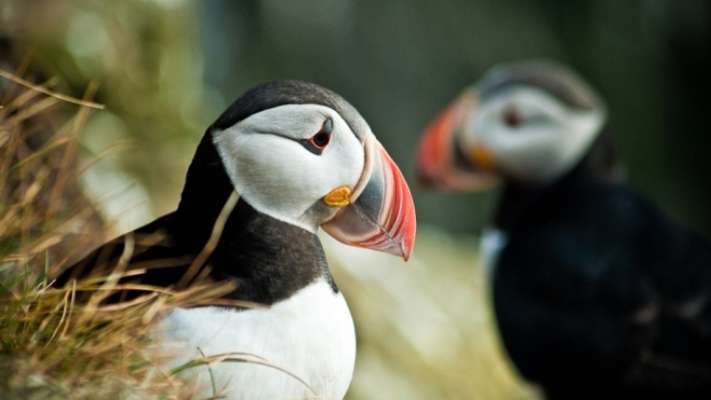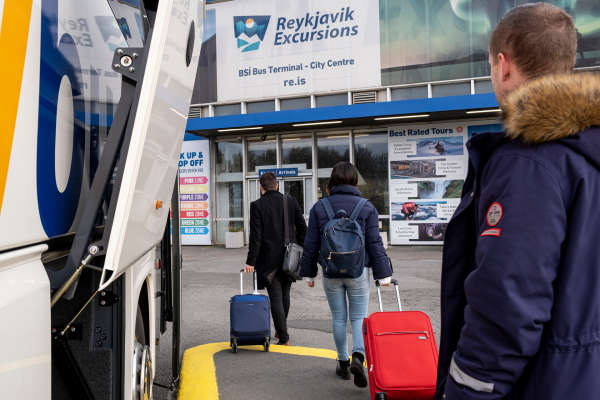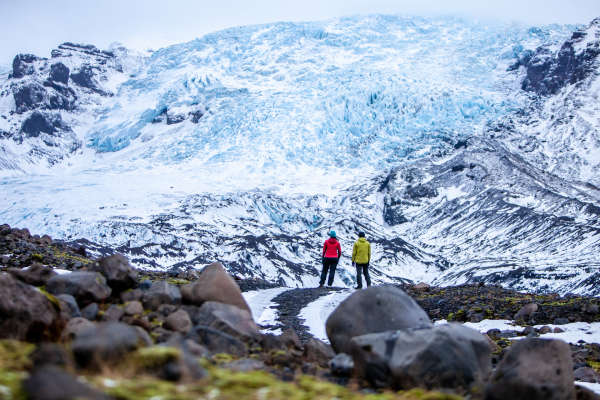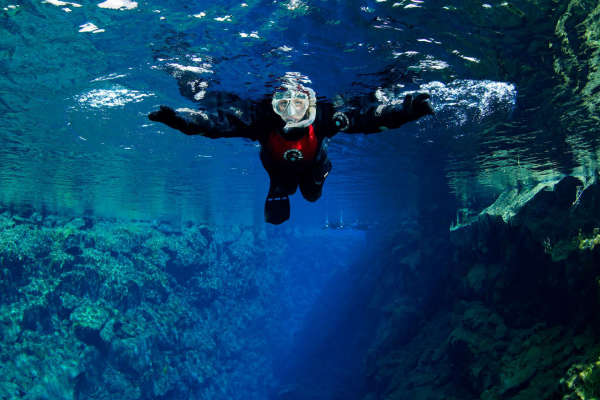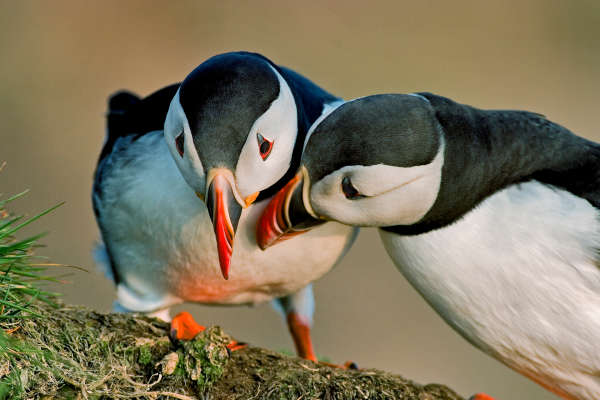Hidden Gems in Reykjavik: Your Guide to Reykjavik’s Best Kept Secrets
Explore Reykjavik like a local! Uncover hidden gems, secret spots, and unique experiences off the beaten path in Iceland’s capital.
November 25, 2024
Reykjavik is one of Europe’s most charming capitals, with plenty of interesting visitor attractions to satisfy those who come for a holiday. In this guide, we’ll eschew the usual subjects to explore tucked-away spots that are off the typical tourist route. Instead we’ll show you how to tap into the city the locals know and help you track down the cultural events and hidden gems that will give you a greater understanding of what makes the Icelandic capital tick.
Hidden Gems in Reykjavik: Go Beyond the Obvious
Reykjavík boasts a clutch of must-sees that feature on tours and itineraries . If you’re a first-time visitor, there’s a good chance that you’ll admire the architecturally magnificent Hallgrimskirkja church or Harpa Concert Hall at some point during your trip.
You’ll most likely stroll past the iconic Sun Voyager statue on the waterfront and eat out beside the Old Harbour before or after a whale watching boat trip. There’s no reason why you wouldn’t immerse yourself in the interactive exhibits at Perlan, shop on Laugavegur or grab a selfie on Rainbow Street. But then what?
History and Heritage
Reykjavik is home to many historic buildings. Some have been repurposed, such as the former post office and a fish factory, both now trendy food halls, and also those that now accommodate some of the capital’s top hotels. On the outskirts of the city, head over to Árbær Open Air Museum where you can learn about Iceland’s social history from centuries gone by.
Meanwhile, Höfði House is often overlooked by today’s visitors but back in the 1980s it was plastered all over the media as it hosted a pivotal Cold War meeting between US President Ronald Reagan and his Russian counterpart Mikhail Gorbachev that signalled a thaw in relations.
A more unusual place for history aficionados to visit is tranquil Hólavallagarður Cemetery, the final resting place of some of Iceland’s most influential figures. Come and pay your respects to Jón Sigurðsson, the father of Icelandic independence, Jóhannes Sveinsson Kjarval, a notable painter, and Ingibjorg Bjarnason, Iceland’s first female Member of Parliament.
Guided walking tours are a great way of learning about your surroundings; try the Reykjavik Cat Walk for an interesting take on why Iceland has a thing about felines. Alternatively, the Reykjavik Beer and Booze tour explores Iceland’s most iconic drinks, including the national drink, Brennivín. In complete contrast, the Icelandic Mythical Walk – or a lesson at the city’s Elf School – unlocks the curious world of the Huldufólk, through stories and anecdotes about elves, trolls and other fantastic creatures.
For visitors seeking to explore Icelandic culture as well as its heritage, Bíó Paradís Cinema is worth checking out. It shows Icelandic films with English subtitles, as well as hosting special screenings of cult classics. Nordic House also puts on a diverse programme of events and exhibitions that celebrate Icelandic culture and that of its Nordic neighbours.
Top things to see and do in Reykjavik

Reykjavik is the world’s most northerly capital city—but there’s so much more to it than its remote location. With its buzzing cultural scene, a picturesque coastal setting, and an incredible range of unique activities, Iceland’s capital really has a lot to offer.
In this guide, you’ll discover some of the most exciting things to do in Reykjavik—including nature and culture, nightlife and cuisine. And we’ll give you some practical tips on how to get around the city too.
Read our article: Things to do in Reykjavik: Your guide to the main attractions and activitiesArt
Modern art grabs the spotlight at the Sigurjón Ólafsson Museum , located in Laugarnes, where an angular building houses a collection of works by the late Icelandic sculptor. Its simple white form is a stark contrast to the offcuts of rusted metal and scrap wood which comprise the junkyard-inspired Raven’sNest, the creation of filmmaker Hrafn Gunnlaugsson.
At Höfuðstöðin, check out Chromo Sapiens by Hrafnhildur Arnardóttur. The music of Icelandic band HAM and cave-like spaces filled with brightly coloured synthetic hair combine to create a multi-sensory experience that’s a far cry from stuffy art museums. Þúfa is another art installation worth checking out, this time overlooking the water on the far side of the Old Harbour.
Viðey Island, just off Reykjavik’s northern shore, is where you’ll encounter Yoko Ono's Imagine Peace Tower and Richard Serra's Áfangar. Ferries shuttle back and forth to a regular schedule – daily throughout the summer and weekends in winter. Two of the oldest houses in Iceland, Viðeyjarkirkja and Viðeyjarstofa, are also located there.
Street art is another reason to stray off the beaten path in downtown Reykjavík. Striking murals adorn the sides of buildings throughout the city. Meanwhile, keep an eye on the events and listings page of the Visit Reykjavik website for details of workshops and craft sessions.
The Best Museums in Reykjavík

Reykjavík is a haven for nature lovers and a treasure trove for those seeking local culture. The capital city’s history museums are portals into the past, while Reykjavík art museums and galleries showcase Iceland’s contemporary brilliance. This handy guide is your curated map for navigating the best museums in Reykjavík, each telling a unique story of Iceland’s heritage, artistry, and ingenuity.
Read our article: Your Guide to the Best Museums in ReykjavíkMusic
Many visitors to Reykjavik’s waterfront admire the unusual architecture of Harpa Concert Hall, with its quirkily-shaped glass panels and striking interior design. Yet relatively few secure tickets for a rehearsal or performance of the Iceland Symphony Orchestra, or experience the acoustics at other concerts in this prestigious venue. Come in January for the annual Dark Music Days festival. In November it’s the turn of Iceland Airwaves which has an excellent track record of nurturing up and coming artists alongside established acts.
Year-round, a string of bars and clubs within the city entertain their patrons with live music, such as Gaukurinn and Paloma. A small museum in what was once a public toilet on Bankastræti goes one better, showcasing the contribution of punk to the Icelandic music scene. Meanwhile on Laugavegur, Mal og Menning was once a bookstore, but has switched its focus and now hosts a regular singalong.
Relaxation: Pools, Parks and Outdoor Spaces
On dry sunny winter days and in the mild weather of summer, the parks and outdoor spaces of the Greater Reykjavík area are a popular destination. Heiðmörk Nature Reserve is served by city buses; hike its trails or fish in its lakes. There, you’ll also find Rauðhólar; these red hills are what remains of pseudo craters in the Elliðaárhraun lava field.
Things to do in Reykjavík at night

While Reykjavik is best known for its stunning location and northern lights, there’s something else that should be in that list: nightlife.
Whether in the months of the midnight sun or the season when nights are dark and long, Reykjavik’s always busy. From the city’s vibing food scene to its bars and clubs, there’s plenty to keep you entertained once the sun’s gone down.
For those of you who prefer some evening culture, you’ll find concerts and sporting events to keep you entertained. Harpa is a great place to try for the bigger musical events, but you’ll find live music across the city.
The lush valley of Elliðaárdalur is one of the largest green spaces in the Icelandic capital. Located to the east of the city centre, it’s a lovely place for a riverside stroll where you can take in the view of pretty Kermóafoss. Stretch your legs in a different way at Skautahöllin í Laugardal, the ice rink in Laugardalur.
Opened more than 60 years ago, the nearby Grasagarður Botanical Garden is a serene oasis that’s perfect for a calming stroll. In summer, join one of the Friday guided tours to further your understanding of Icelandic native flora and learn about the history of this delightful green space. In winter, get a different perspective on the space as it hosts greenhouse-based exhibitions and workshops.
While tourists scramble to indulge themselves with Sky Lagoon’s seven-step ritual, locals prefer to keep things simpler. Relaxing in the water is a popular pastime, whether that’s a swim at one of the city’s 18 geothermal pools – the largest is Laugardalslaug – or a visit to Nauthólsvík Geothermal Beach, a popular manmade lagoon beside the ocean.
Reykjavík's Iconic Harpa

Harpa Concert Hall is a testament to Iceland’s love affair with the arts and its commitment to cutting-edge design. Harpa is not just a venue for world-class musical and theatre performances; it’s a hub of Icelandic culture and a must-see on any Reykjavík tour for architecture enthusiasts.
Read our article: A Guide to Reykjavík's Iconic HarpaShopping
Iceland is a nation of avid readers so there are plenty of bookstores in the city. Penninn Eymundsson is the nation’s largest bookseller, with multiple branches in the capital. Alternatively, check out the Reykjavik branch of The Old Bookstore, long an institution in Flateyri in the Westfjords or Bókin, a great place for secondhand finds.
For a more eclectic range of goods, Kolaportið flea market opens on weekends on Tryggvagata and is Reykjavik’s largest indoor secondhand market. It’s a great place to browse for vintage clothes and pick up an authentic lopapeysa, the traditional Icelandic jumper. You’ll also find hand-made jewellery, art and antiques, old vinyl and much more. Grab a coffee and cake when you’re done, or if you’re self-catering, grab a few groceries on your way out. Food
A good way to get to know a place is through its food, and Reykjavik is no exception. Speciality food stores abound and food walks are a useful introduction if you’re keen to get an overview of Icelandic eating habits.
The popular Reykjavík Food Walk patronises family-run businesses and local hangouts. Local picks are firmly embedded in their surroundings and value quality ingredients. For instance, Flóran at the Reykjavik botanical garden makes use of produce grown on site in its tasty dishes, while the numerous seafood restaurants scattered throughout the city capitalise on its maritime traditions.

Socialising while eating and drinking is a favourite pastime, which helps explain Iceland’s coffee culture. Casual dining, such as within the city’s many food halls has also taken off in a big way, probably because everyone can choose whatever cuisine they fancy but still eat together. And of course, if you’re looking to grab a snack on the go, it’s hard to beat a hot dog or an ice cream, depending on whether you crave something savoury or sweet.
Getting around like a local probably means passing on the Hop On, Hop Off bus, though that’s a convenient and easy way to get between the many Reykjavík Iceland attractions. The city bus network covers most areas of the capital, though you may wish to rent a bicycle or scooter for even more flexibility.
You really don’t need a car, especially downtown, as the city is sufficiently compact to be walkable. Nevertheless a hire car is a useful runabout, particularly if you’re keen on reaching some of Reykjavik’s suburban attractions or covering more ground in a relatively short space of time.
Thanks to the power of the internet and the reach of social media, hidden gems rarely remain under the radar for long. If you stumble upon your own favourite, maybe you’ll keep it under wraps so that it stays a secret? After all, there are plenty of tours and better-known things to do in Reykjavik that are equally enjoyable.
Perhaps the best way to channel a local vibe, however, is in the way you approach your off the beaten track sightseeing. Þetta reddast means “it will all work out alright in the end”. So don’t over-plan things. Instead, go with the flow and do whatever the fancy takes you.
Frequently Asked Queestions about Hidden Gems in Reykjavík
What are some hidden gems in Reykjavik that are off the tourist path?
Reykjavik offers many unique spots like Hólavallagarður Cemetery, Árbær Open Air Museum, and Viðey Island with its Imagine Peace Tower. Additionally, check out cultural highlights like Bíó Paradís Cinema and the lesser-known Raven’s Nest art installation.
What is the best way to explore Reykjavik like a local?
Walking or biking around Reykjavik is ideal for immersing yourself in the city’s culture. Guided tours like the Reykjavik Cat Walk or the Reykjavik Beer and Booze Tour offer unique perspectives. Don’t forget to visit local spots like food halls, geothermal pools, and street art murals.
What is the nicest part of Reykjavik?
The Old Harbour area and the downtown district are some of the nicest parts of Reykjavik, offering charming views, local boutiques, and vibrant cafés. Laugavegur, Reykjavik’s main shopping street, is also a favorite for its lively atmosphere.
What is the most beautiful street in Reykjavik?
Rainbow Street, also known as Skólavörðustígur, is considered one of the most beautiful streets in Reykjavik. It leads up to the iconic Hallgrimskirkja church and is lined with colorful buildings, art installations, and quaint shops.
Is it safe to walk around Reykjavik at night?
Reykjavik is one of the safest cities in the world, and walking around at night is generally very safe. However, as with any destination, staying aware of your surroundings and avoiding poorly lit areas is always a good idea.
Can I wear jeans in Reykjavik?
Yes, jeans are perfectly acceptable in Reykjavik. The city has a casual and relaxed dress code, but be sure to pair your jeans with warm layers, as the weather can be chilly and unpredictable.
Are there any unique cultural experiences in Reykjavik?
Reykjavik is rich in cultural offerings, from live music events at Harpa Concert Hall to exploring Nordic culture at the Nordic House. You can also watch Icelandic films with subtitles at Bíó Paradís or join a walking tour to learn about the city’s heritage and folklore.
What is the best time to visit Reykjavik for unique activities?
Reykjavik has something special year-round. Visit during winter for northern lights and festivals like Dark Music Days, or summer for midnight sun activities, outdoor events, and accessible ferries to Viðey Island.
Is Reykjavik a good destination for food lovers?
Absolutely! Reykjavik boasts a vibrant food scene with local favorites like seafood restaurants, food halls, and the iconic hot dog stands. Food tours like the Reykjavik Food Walk are excellent for discovering family-run establishments and Icelandic culinary traditions.
Tours in the spotlight
16 Tours
REYKJAVIK EXCURSIONS BLOG
Get inspired! Information and tips and must see places in Iceland, fun facts, customs and more.
Snorkeling and Diving in Iceland - Your Guide
Discover the best Iceland snorkeling and scuba diving sites with our ultimate guide to Snorkeling and Diving in Iceland.
Read Blog








